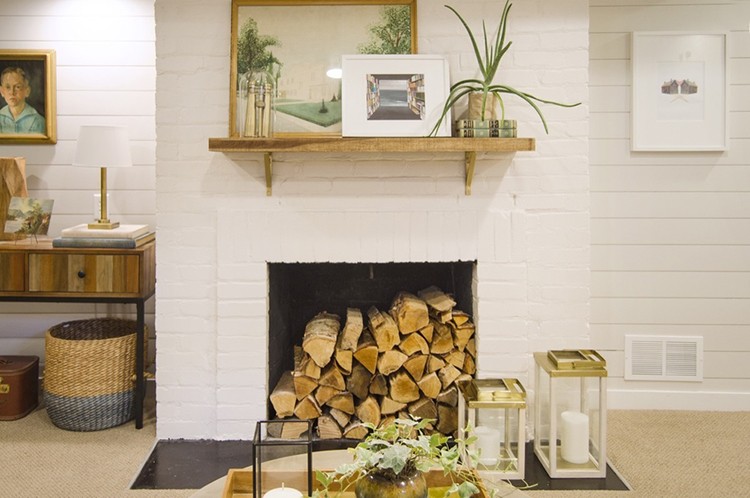
DIY blogger Bruno Bornsztein of Curbly used shiplap appearance boards to create a basement paneling accent wall. Find out how to get this fresh, rustic look in your home.
Basement Paneling using Shiplap Appearance Boards
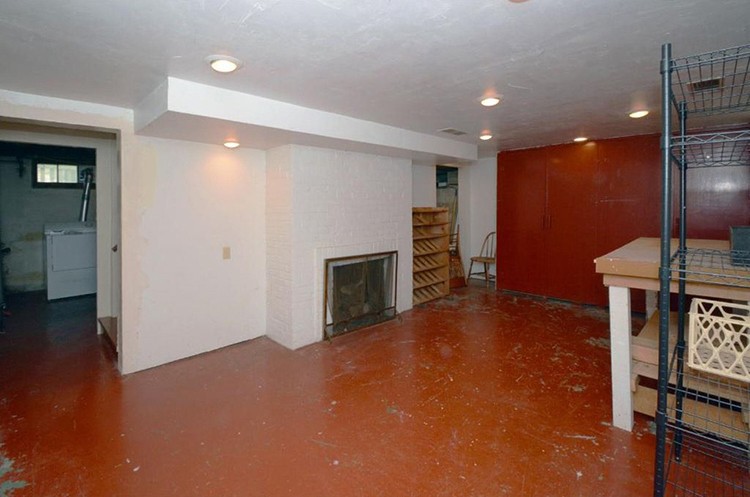
When I was a kid, our house had an unfinished basement, with limestone walls, spiderwebs everywhere, and messages scrawled onto the ceiling risers by the renters who’d lived there in the 70s. Despite the poor condition, my sister and I always wanted to spend time down there. We brought carpet remnants down to cover the floors, an old black and white TV for entertainment. It was our secret hideaway. Basements always seem to have that kind of potential.
This is all a roundabout way of introducing the big reveal of the Curbly House basement makeover! When I first saw this room, I immediately knew we could make it a whole lot better. Read on to see how we transformed the space with a shiplap siding accent wall, some carefully chosen accessories, and a little bit of paint.
How to Create an Accent Wall using Shiplap Paneling
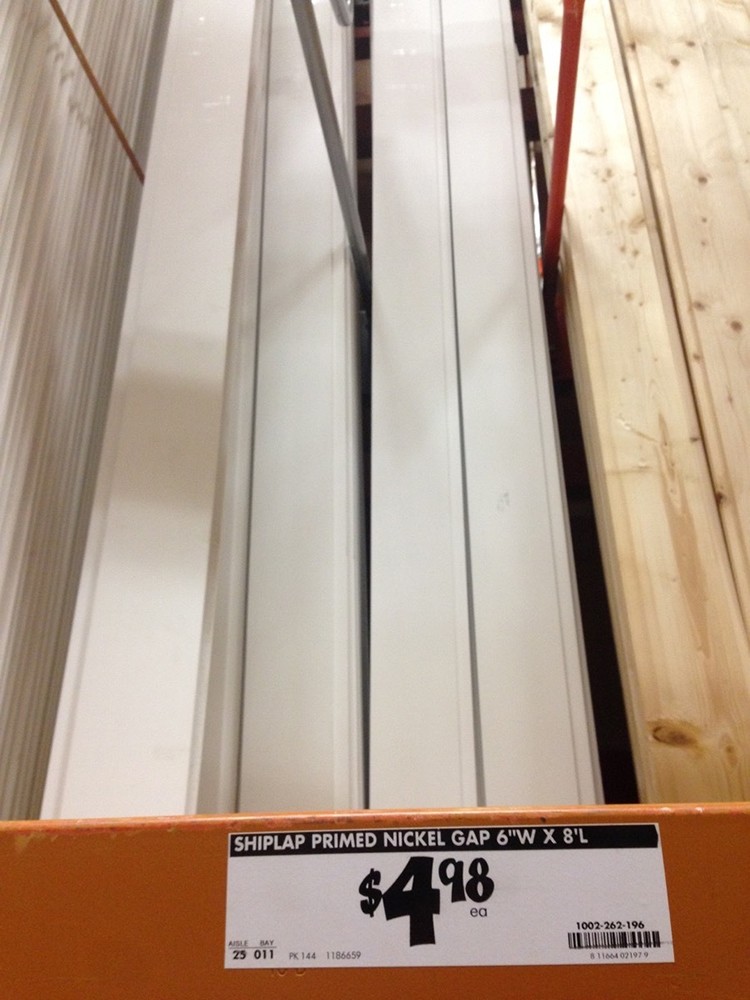
The best feature of this room, in our opinion, was the fireplace wall. So we decided to accent it! It’s not often you see a fully functioning fireplace in a basement, and this one was large and attractive. Plus it gave us the opportunity to create an interesting visual focal point in a room which otherwise was kind of boring (just four walls and some basement windows).
So we teamed up with The Home Depot to try out their shiplap appearance board product. These are high-quality, pre-primed boards that are perfect for accent walls. The shiplap is stable, resists warping and splitting, and it’s super-easy to install.
Shiplap paneling is also a great option in spaces where you need to cover up an existing problem (like cracked plaster, or ugly wall coverings) without resorting to a full demolition and re-sheetrocking project. Although we weren’t dealing with this issue, the shiplap gave us an easy way to make a big aesthetic impact.
Step 1: Prepare the Wall
Remove any picture hooks or other items from the wall.
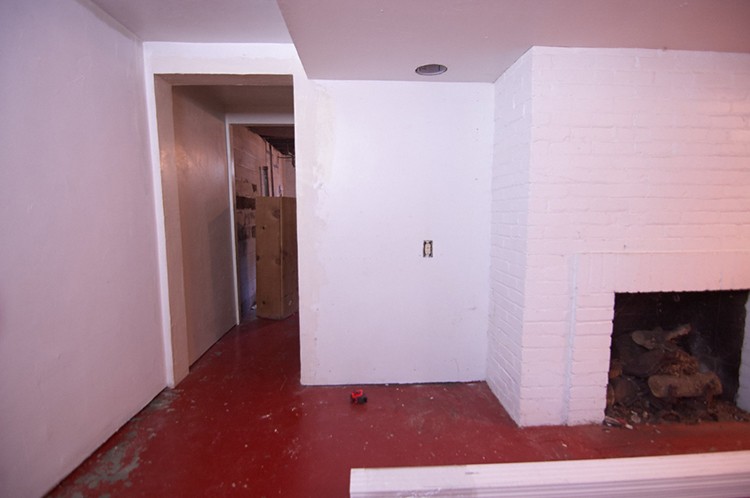
Step 2: Mark the Locations of Studs
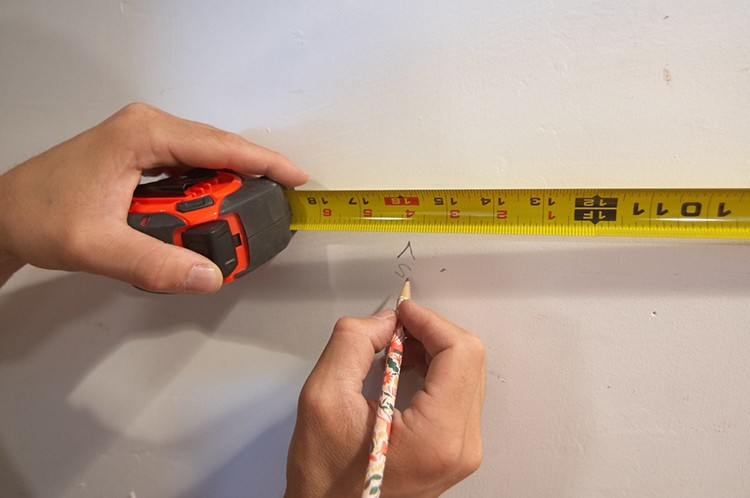
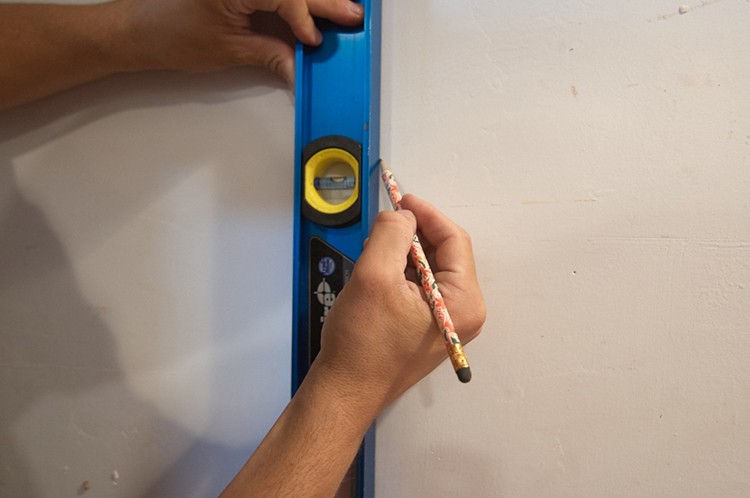
Use a stud-finder to locate the wall studs, then mark vertical lines using a level.
Step 3: Measure and Cut the Shiplap Paneling Boards
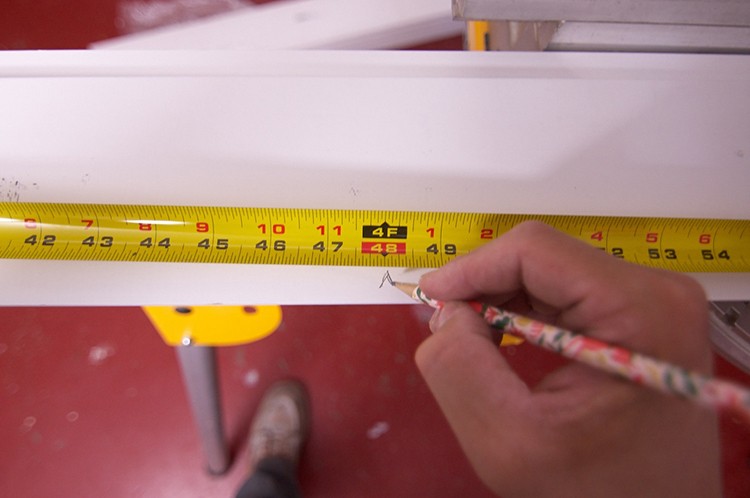

Carefully measure the length required for your first board. When in doubt, it’s better to cut them a bit long; you can always go back and cut the board shorter.
Step 4: Attach the Boards
Install the first board, starting at the top of the wall, with the tongue facing down.
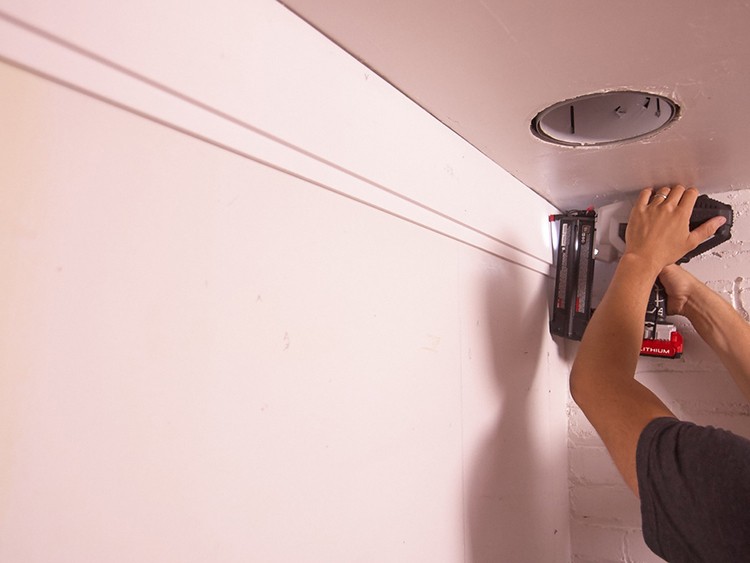
Because you marked your stud locations earlier, you know exactly where you need to drive the finish nails. Keep on moving down the wall, adjusting for changes in length (you should measure for each board), and notching out around any wall outlets or switches. If necessary, add a piece of baseboard trim to finish off the bottom edge.
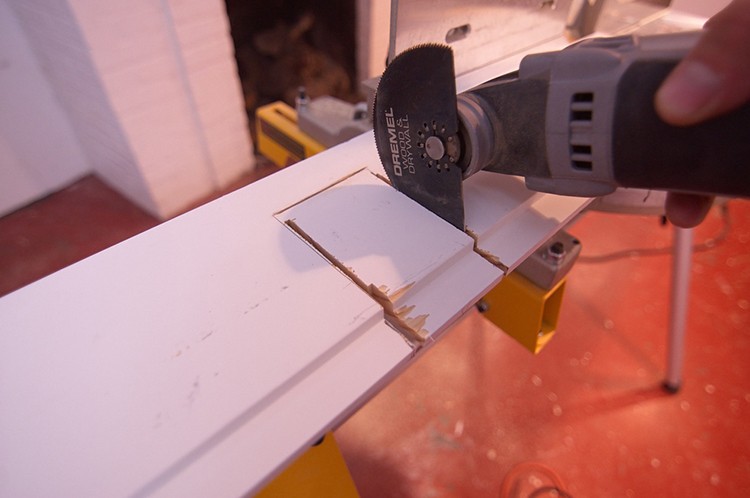
Once the wall is covered, it’s just a question of filling all the nail holes with spackle and applying a finish coat of paint!
Final Reveal

Wait. Remember this?
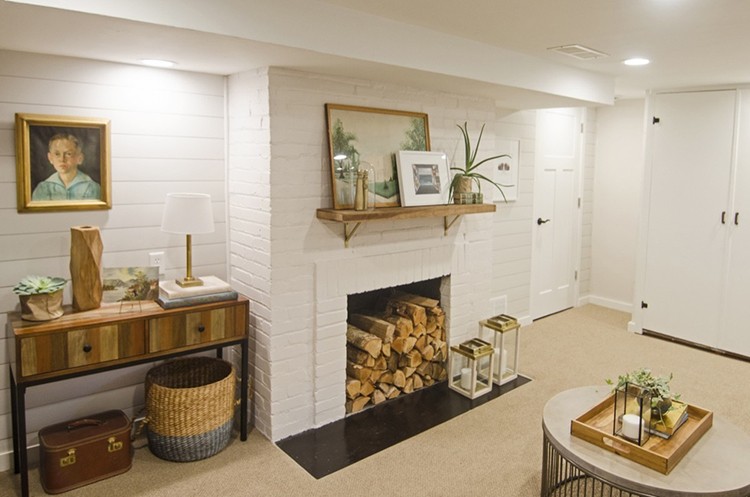

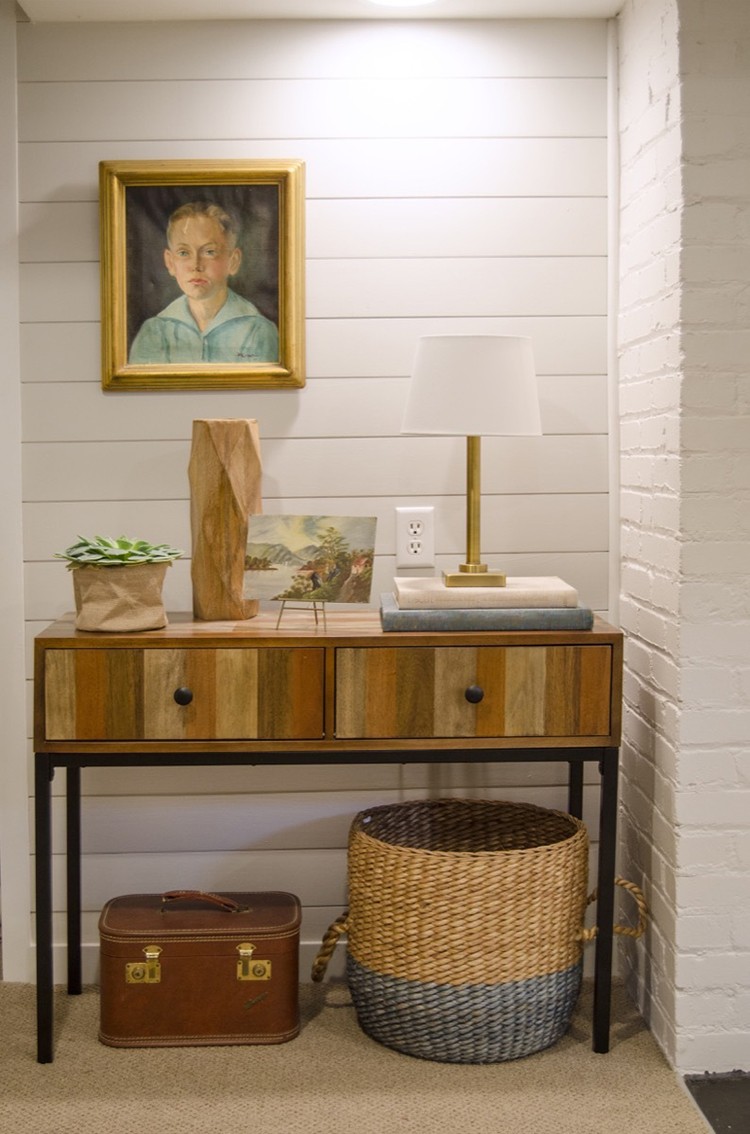
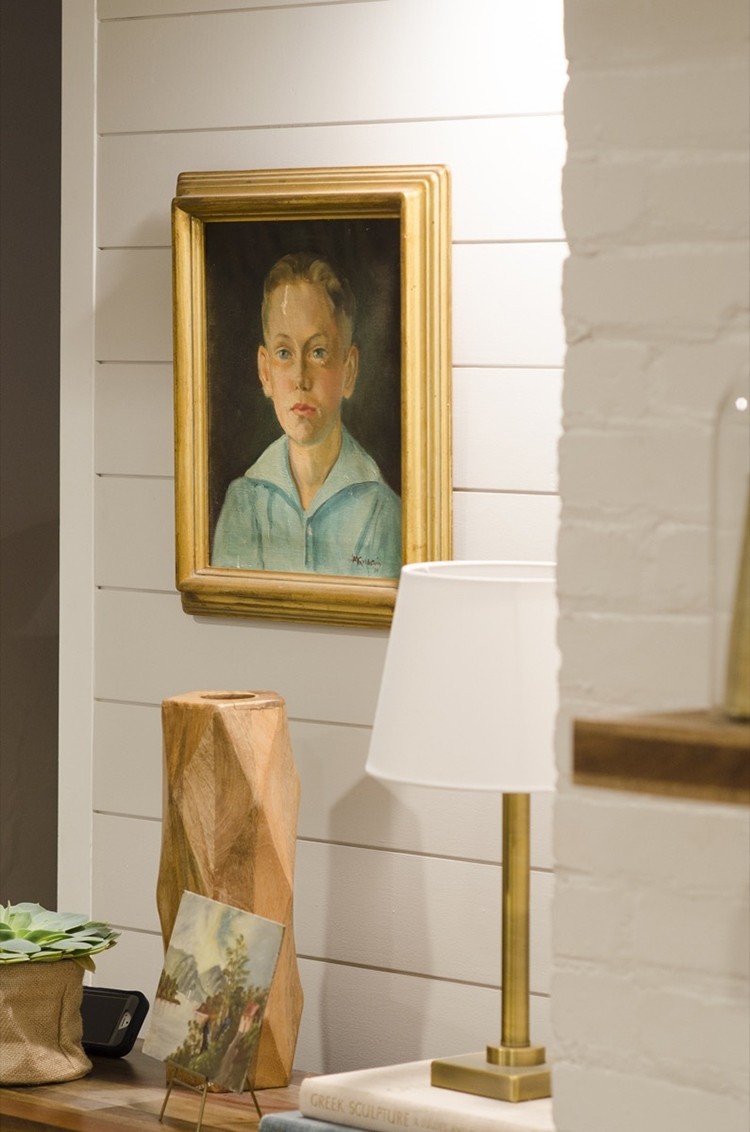


Um, yeah. This is the same room.
I’m thrilled with the way this basement paneling project turned out. The shiplap accent wall gives it an intentional finished look and elevates the room beyond a simple basement space. It also fits the style of the house and created instant character in an otherwise boring room.
Find more Accent Wall and Basement Ideas on The Home Depot Blog. Shop shiplap and more appearance boards to create your own fireplace makeover at The Home Depot.
The post The Curbly House Basement Room Makeover appeared first on The Home Depot Blog.
